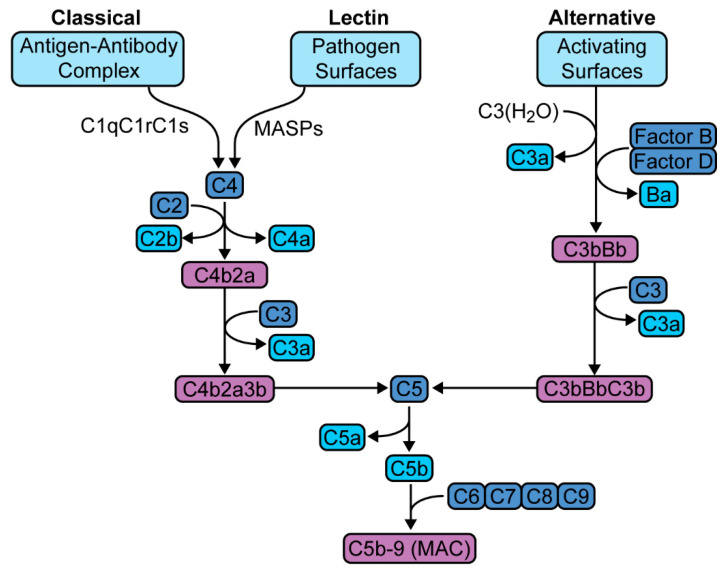Figure 1.
Complement activation pathways. The classical pathway is activated by the binding of antibody-antigen complex with the C1 esterase complex (C1qC1rC1s), which then forms C3 convertase (C4b2a). The lectin pathway is initiated by the binding of mannose-binding lectin with mannose residues on pathogen surfaces, which activates mannose-associated serine proteases (MASPs) to form the same C3 convertase (C4b2a). The alternative pathway is triggered directly by antigen and also through spontaneous autoactivation, leading to the formation of a similar C3 convertase (C3bBb). These C3 convertases hydrolyze C3 to yield the C5 convertases (C4b2a3b and C3bBbC3b, respectively), which culminates in the generation of C5b-9 or MAC (membrane attack complex).

